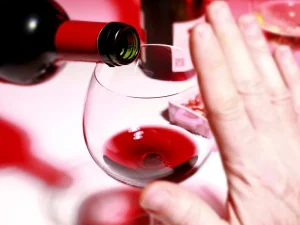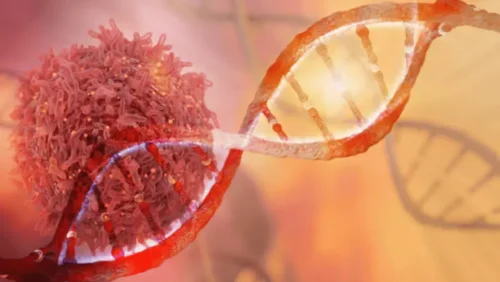
For the brain, the difference between normal rewards and drug rewards can be likened to the difference between someone whispering into your ear and someone shouting into a microphone. As a result, the person’s ability to experience pleasure from naturally rewarding (i.e., reinforcing) activities is also reduced. Drugs interfere with the way neurons send, receive, and process signals via neurotransmitters. Some drugs, such as marijuana and heroin, can activate neurons because their chemical structure mimics that of a natural neurotransmitter in the body. Although these drugs mimic the brain’s own chemicals, they don’t activate neurons in the same way as a natural neurotransmitter, and they lead to abnormal messages being sent through the network. The data produced by third parties and made available by Our World in Data is subject to the license terms from the original third-party authors.
- Treatment approaches tailored to each patient’s drug use patterns and any co-occurring medical, mental, and social problems can lead to continued recovery.
- And trust me, drug dealers would kill (probably literally) for the opportunity to advertise their product so publicly.
- If you feel that you sometimes drink too much alcohol, or your drinking is causing problems, or if your family is concerned about your drinking, talk with your health care provider.
- Large surges of dopamine “teach” the brain to seek drugs at the expense of other, healthier goals and activities.
Alcohol Consumption
- Cultural, social, religious, historical, and legal factors can also play a role in determining what forms of substance use are acceptable.
- The high MOE values of cannabis, which are in a low-risk range, suggest a strict legal regulatory approach rather than the current prohibition approach.
- It is always best to enter a medically assisted, inpatient detox facility to detox as there is 24/7 medical support, along with clinical support, followed by inpatient treatment.
- For the brain, the difference between normal rewards and drug rewards can be likened to the difference between someone whispering into your ear and someone shouting into a microphone.
- The question policy experts typically ask isn’t which drug is more dangerous, but how marijuana and alcohol should be treated through policy as individual drugs with their own set of unique, complicated risks.
- As a result, the person’s ability to experience pleasure from naturally rewarding (i.e., reinforcing) activities is also reduced.
According to the National Institute on Alcohol Abuse and Alcoholism, alcohol causes 88,000 (62,000 men and 26,000 women) deaths every year. The National Institute on Alcohol Abuse and Alcoholism tells us alcohol shortened the lifespan of those 88,000 by 30 years. That makes alcohol the third leading preventable cause of death in the U.S. All other drugs combined cause approximately 30,000 deaths annually. As you can see, there are large differences in drug dependency across countries, with some – such as the United States and Canada – having several times the global average.
Mental health disorders as a risk factor for alcohol dependency
Previous risk assessment of tobacco (both financed and co-authored by the tobacco industry) have looked at various compounds but not included nicotine itself22,23. From the variety of investigated compounds in tobacco smoke, the lowest MOEs were found for hydrogen cyanide (MOE 15)22 and acrolein (MOE range 2–11)23. These values are reasonably consistent with our MOE for nicotine of 7.5 (individual exposure).
Stigmas Associated with Drug and Alcohol Addiction
- Because denial is common, you may feel like you don’t have a problem with drinking.
- Despite one’s desire to cut down or quit drinking, alcohol can compromise one’s ability to make decisions, as well as impact one’s impulse control resulting in a compulsion to drink.
- Named after the famous writer Ernest Hemingway, you might not act drunk even if you’ve had a lot to drink.
Drug experts broadly agree that individuals and society would arguably be better off if marijuana became the most accepted recreational intoxicant of choice instead of alcohol. Jon Caulkins, a drug policy expert at Carnegie Mellon University, gave the example of an alien race visiting Earth and asking which land animal is the biggest. If the question is about weight, the African elephant is the biggest land animal.
Prevalence of alcohol use disorders

This also makes relapse more likely when one attempts to quit drinking. What may begin as recreational alcohol use can quickly become abuse and can easily transition into an alcohol alcohol vs drugs use disorder or alcohol dependence. Measuring the health impact by mortality alone fails to capture the impact that alcohol use disorders have on an individual’s well-being.

Our results for ethanol are also consistent with previous MOE studies of ethanol20,21. For cannabis and nicotine, the discrepancy in the sensitivity analysis can be explained in the chosen endpoints (no dose response data on mortality in humans were identifiable in the literature). For https://ecosoberhouse.com/ example, the only available human toxicological endpoint for cannabis as chosen by EFSA55 was “psychotropic effects”. The rationale for choosing this endpoint was the exclusion of risk for the inadvertent and indirect ingestion of THC when hemp products are used as animal feed55.
The disease burden from alcohol use disorders

In the US, Canada, Australia, New Zealand, Argentina, and many European countries, alcohol is responsible for around a third of all traffic deaths. The chart shows the age distribution of those dying premature deaths due to alcohol. Heavy episodic drinking is defined as the proportion of adult drinkers who have had at least 60 grams or more of pure alcohol on at least one occasion in the past 30 days. An intake of 60 grams of pure alcohol is approximately equal to 6 standard alcoholic drinks. Across Europe, for example, more than two-thirds do in most countries. The best approach to prevent substance use is to provide comprehensive education and support at all opportunities.
Alcohol, crime, and road deaths

All authors have been involved in the drafting of the article and the interpretation of the data and in critical revisions of the content. All authors have given final approval of the version to be published. BetterHelp can connect you to an addiction and mental health counselor. Understanding the shocking scale of this problem, along with its risk factors, is crucial for creating prevention and treatment programs that save lives. We joke about having too many margaritas; we do not joke about deciding to roll up our sleeve and inject heroin.
It’s important to teach children, adolescents, and adults about the prevalence and dangers of substance use and help them develop resilience skills to avoid using substances. Substance use is often a precursor to developing substance use disorder. In fact, for some people, trying a substance or using it occasionally can be the first step of developing substance use disorder. “Substance use disorder” is now the medical term used to describe uncontrolled use of a substance despite negative consequences to one’s health, work, studies, family, and day-to-day functioning. If you’ve heard the terms “substance use” and “substance abuse,” you may wonder whether they mean the same thing or whether there’s any difference between them. If you fall into this group, alcohol causes a dramatic shift in your personality.